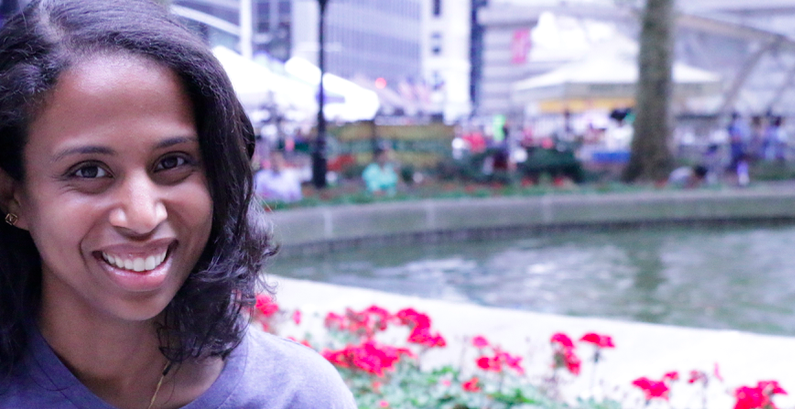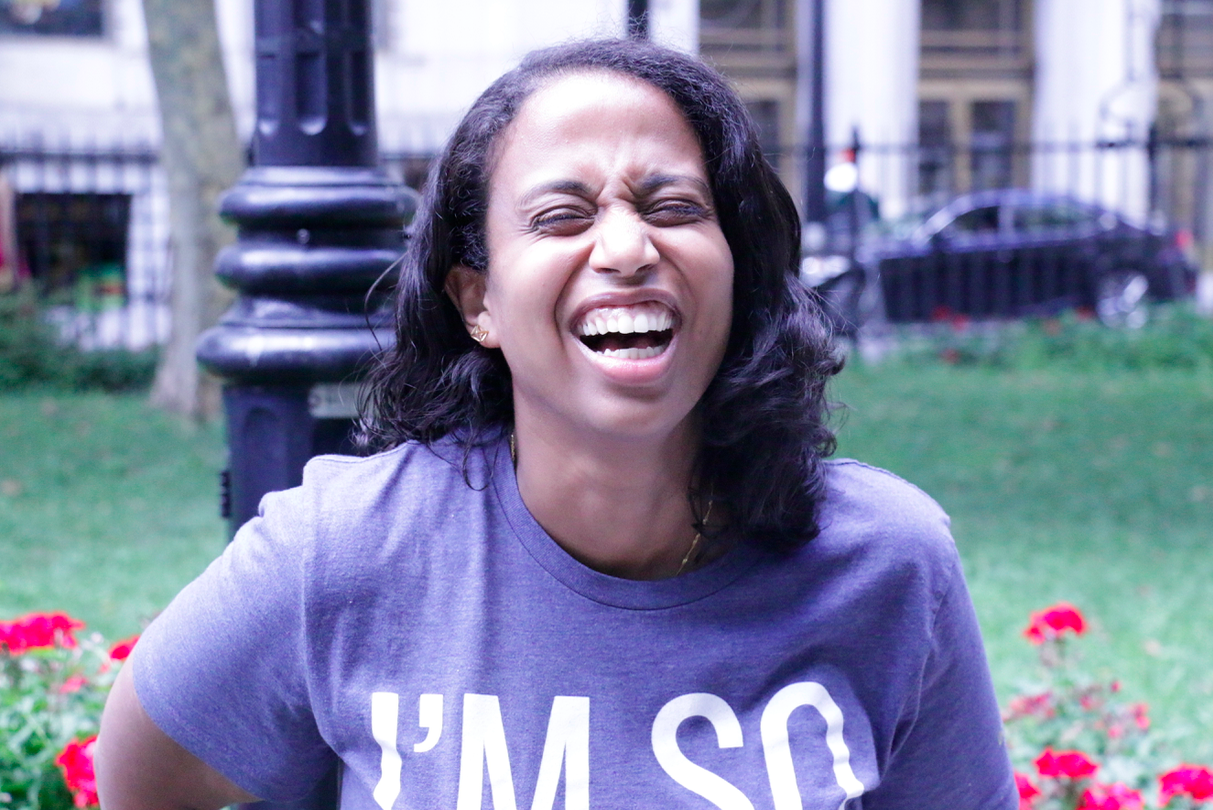What were you doing before you started teaching?
I worked in digital marketing and analytics monitoring, so I looked at clients’ social media campaigns and figured out their top influencers. Essentially, I was making rich people richer. I liked my clients, but they already had a lot of money, and making them more money really didn’t satisfy me.
During that time, my brother was young and struggling with math and reading. Luckily for my family, we were able to support him. Because of that support he received, he was able to move past those obstacles and now he’s an honor student. I realized that not a lot of students have the luxury to have that much support when it comes to their education, and I wanted to be a part of that. I thought, “How can I do that?” Then I realized, “Wait a minute — I could be a teacher.”
How did you hear about summer teaching at Flatiron School Pre-College?
Earlier in the year, I had pitched a 6th grade Computer Science (CS) course to my principal for the following year. At the time I was teaching a CS club where I would teach myself lessons online, then teach the kids the next day. I was only a day ahead of the work, but I knew they needed some kind of CS classes. Shortly after that, my principal sent me an email about the program. She said, “Hey, I think this is perfect for you!”
“I met with my co-teachers and we discussed, “What kind of environment do we want to create for our students?” The agreement was we wanted them to feel like a family and have friends at the end of the program.”
What do you like about teaching at Flatiron School?
It’s amazing — I love every minute of it. I’m so sad I won’t be here continuously, because it’s just such a family here. I’m a big family person and community person, and us teachers here are a family. And seeing the students go from not knowing anything to creating their own web apps and having a community, it’s just phenomenal. That word summarizes how I feel about Flatiron School.
Do you have any stories of students making connections with each other?
In class, we did positive reinforcements every day in our classrooms — students say something positive they’ve learned or done, or something positive about someone else. There were two twins who I worked with — Lydia and Alayna. One of them is a Kode with Karlie Scholar winner. The twins came for courses in NYC. Although they’re in Chicago now, they’ve started keeping contact with some of their friends in NYC from the classroom and they still do positive reinforcements everyday through text message. That is the kind of community we built. That’s when I started to understand how powerful Flatiron School’s impact is.
There isn’t a fear of failing here. Failing is not attached to being a failure, and that’s important!
How is your experience teaching at Flatiron School different from traditional educational systems?
There are two things that really stood out to me. The first is that there isn’t a fear of failing here. Failing is not attached to being a failure, and that’s important! There’s no way if you gave an adult this material they could do it in two weeks without tripping up a bit. What these kids are doing is challenging, but believing that failing once equals failure is toxic. We try to deprogram them from that mindset.
The second is the way we focus on building community here. The lead teachers here gave us freedom to build our community the way we want to, so I met with my co-teachers and we discussed, “What kind of environment do we want to create for our students?” The agreement was we wanted them to feel like a family and have friends at the end of the program. That’s the reason the students have fun and enjoy it.
You work at an all-girls charter school in Crown Heights, Brooklyn. How are you planning on integrating code into your classes come fall?
My school does have a high school CS course, but I’m creating the first middle school CS curriculum — not only for my school — but for all Uncommon Schools as part of the Uncommon Network. The first two quarters are focused on creating. I want them to practice critical thinking skills before anything else. We’re also going to do a tech innovation competition and create a business plan for others to help their community through technology. By the end of the school year, the students are going to have a science fair where they can present their code, and it’s going to be phenomenal. I’ve already told all my parents and students, and they’re super excited about it.
The vast majority of children in the United States don’t get exposure to any comprehensive computer science programs during their K-12 years. How do you think bringing what you learned at Flatiron School will impact your students?
At the age of 12, a student knows if they’re good at something or not, and then that’s it. When they go to high school CS is an elective, they’re not going to choose it. By the end of the school year, I want my students to feel confident that they have the potential to be a CS major or a developer. That way, when they go to high school and get into college, they can say, “I want to do this!” or, maybe, “I choose not to do this,” but it’s not because they feel like they’re inadequate. It’s because they were able to do it and decided whether or not it was right for them. That’s a completely different place to come from.
Are you interested in becoming a teaching fellow?
Written byFLATIRON SCHOOL
Make yourself useful.



